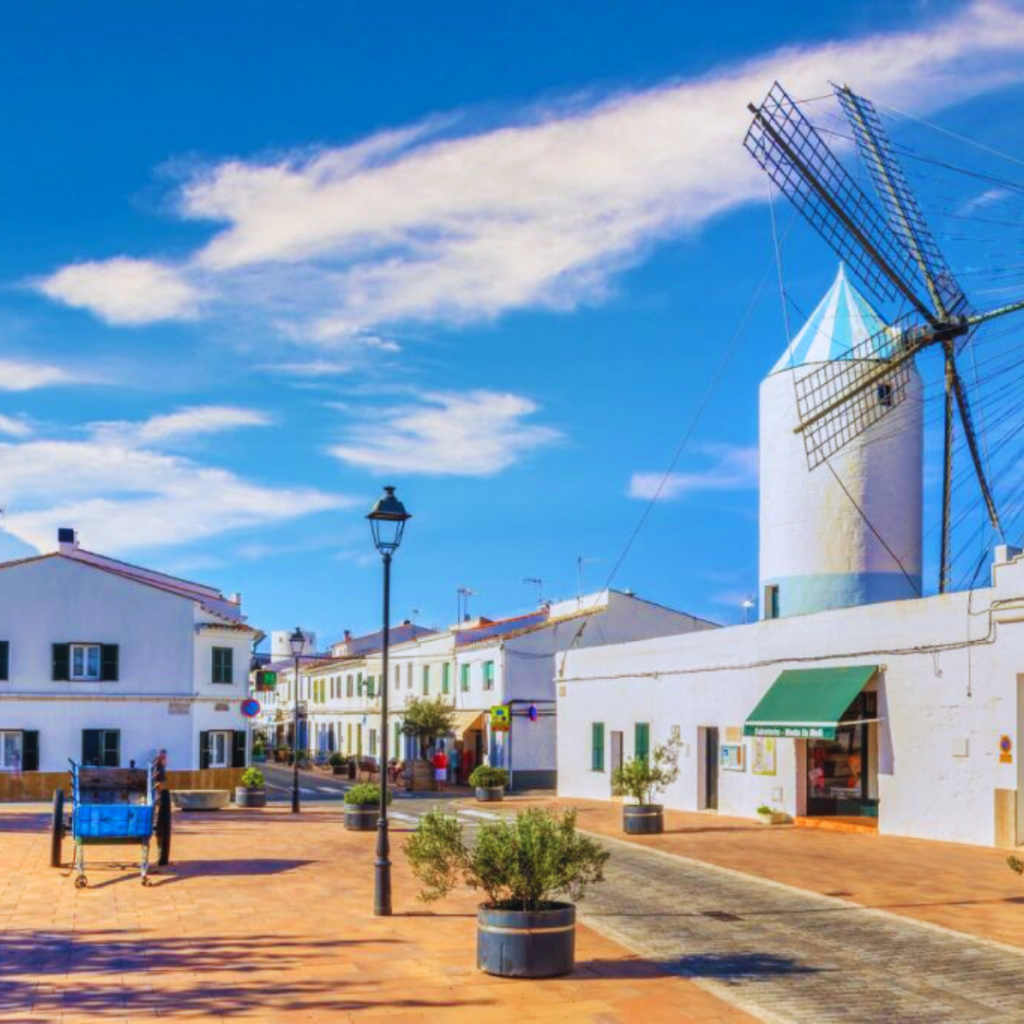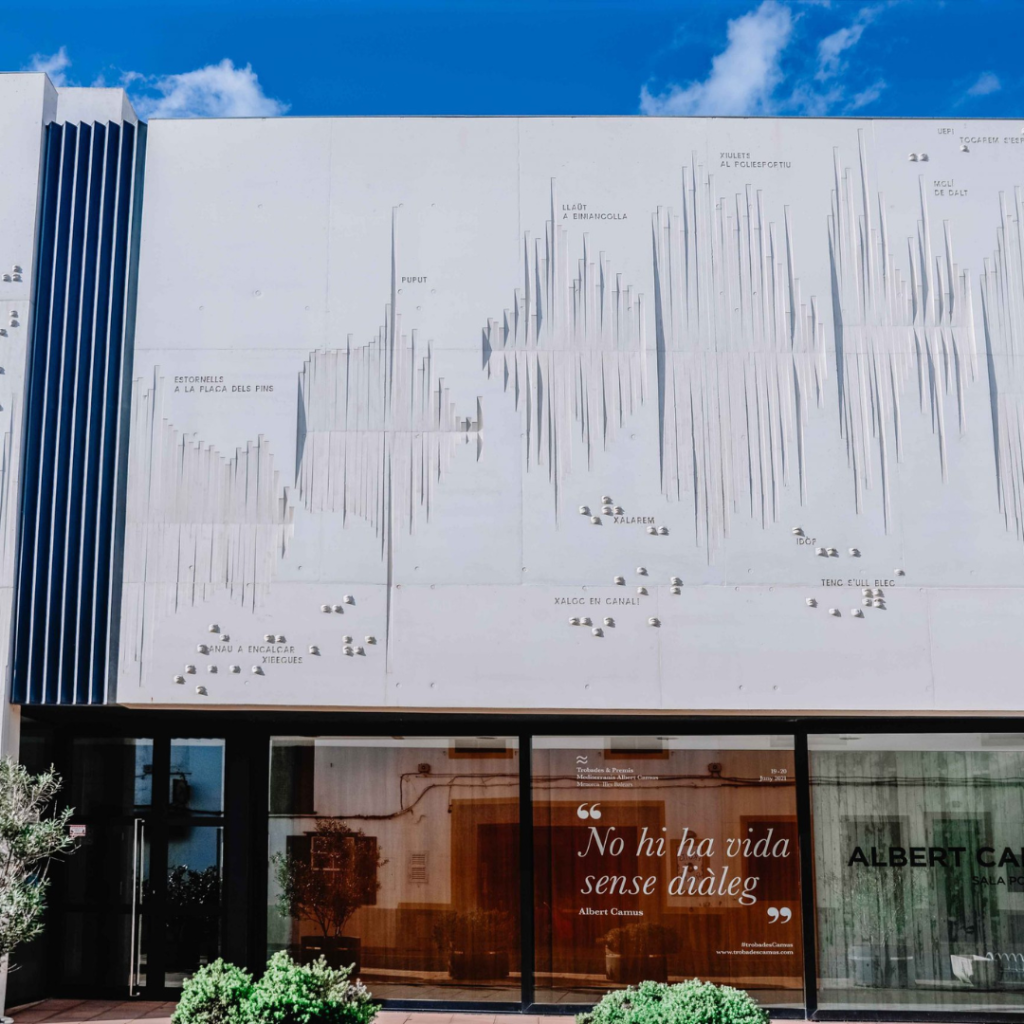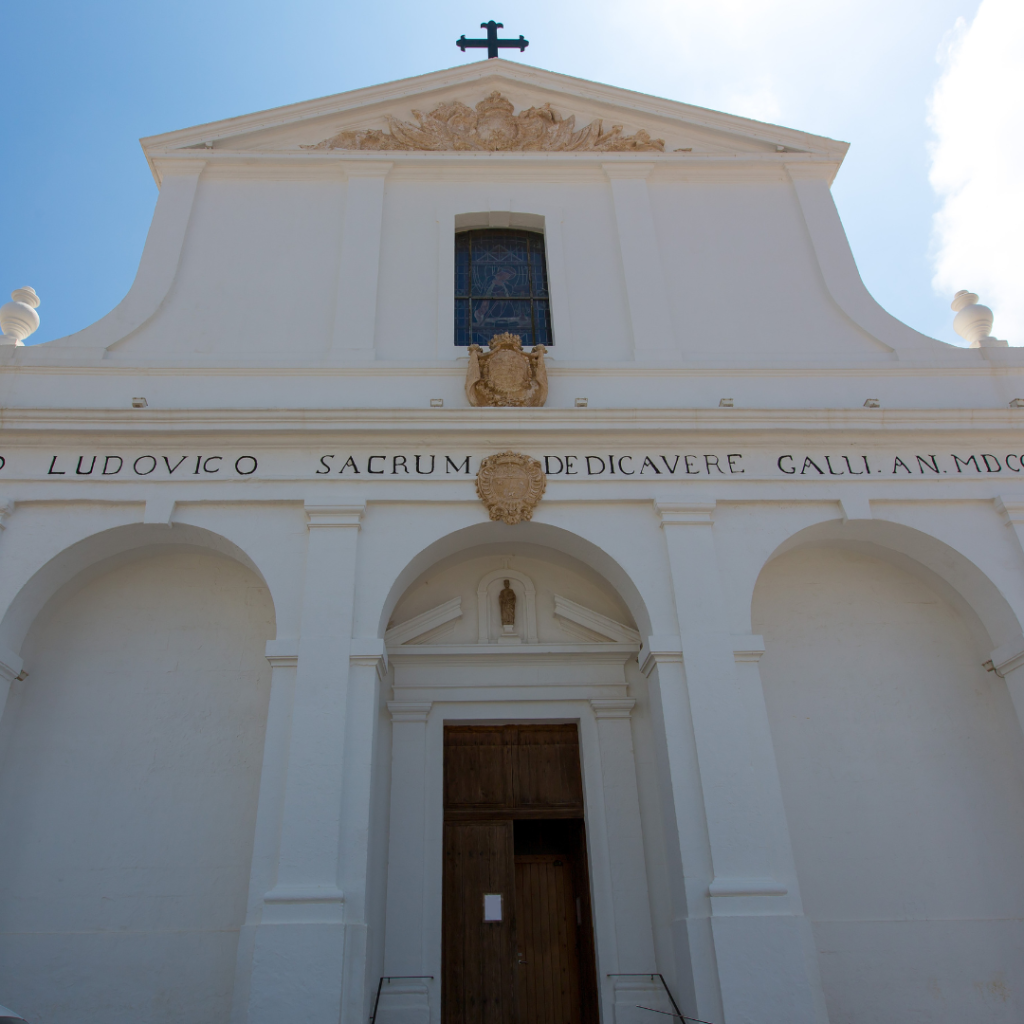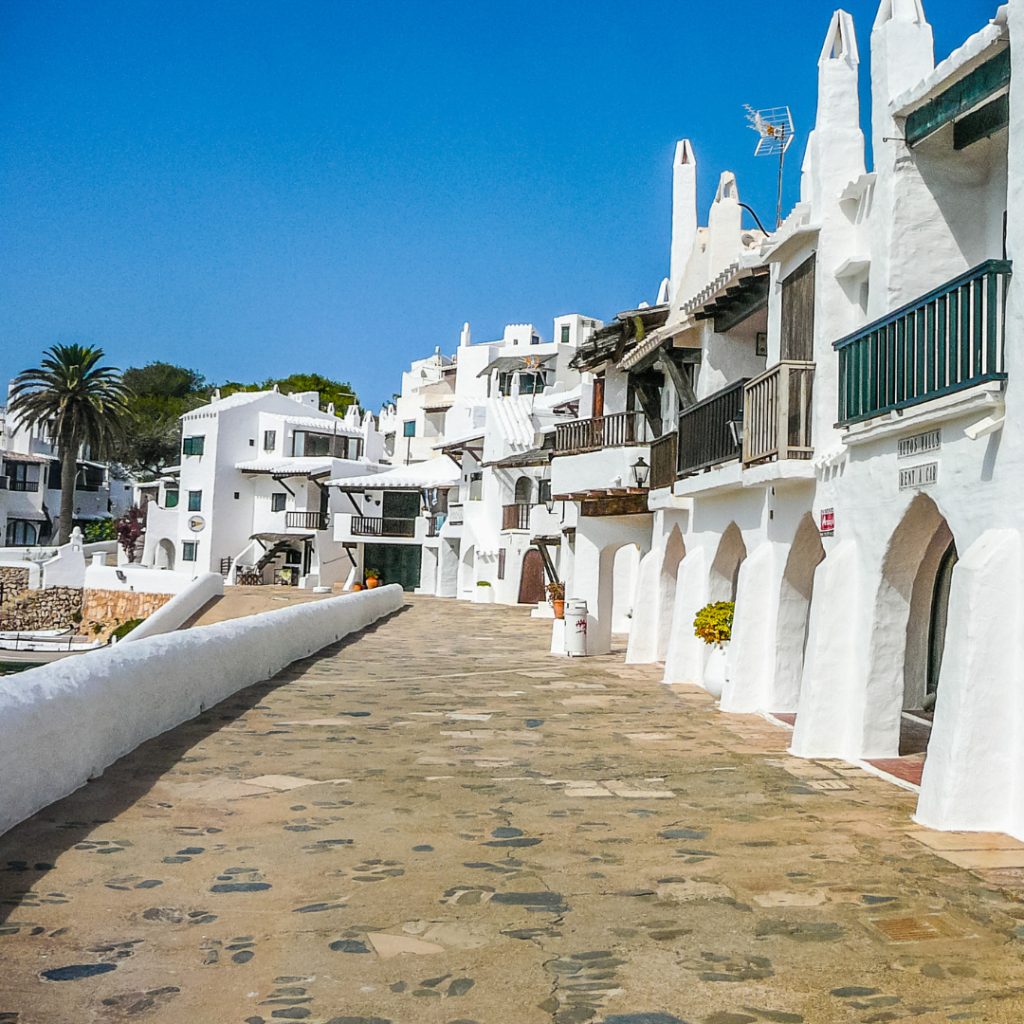Today we return to introduce you to the only French-origin town on the island of Menorca. That’s right, we’re talking about the town of Sant Lluís. We hope that in the following lines, you will discover some curiosities that will help you fall in love with this magnificent town in the southeast of Menorca, just like we did. Its Origins, myths and legends, notable places, and much more. Join us!

The town of Sant Lluís, located in the southeast of the island, is known to everyone who visits Menorca. You have probably heard about or even visited some of its beaches, coves, markets, or festivals. However, today we want to take it a step further and uncover some facts you might not know about this beautiful town in the southeast of Menorca. Let’s dive in:
Did you know that Albert Camus, the Nobel Prize-winning author, had a grandmother from Sant Lluís?
That’s why a multifunctional hall in the town is named after him. In 2021, the Albert Camus Hall was certified with the distinction or label «Menorca Biosphere Reserve,» becoming the first cultural facility on the island to receive this recognition, which acknowledges the work carried out in terms of space sustainability and commitments made to maintain and intensify efforts in this line of work. It has also been the seed of the «Trobades & Premis Mediterraneos Albert Camus«, an international gathering of thought/literature that takes place every year in the town of Sant Lluís. Special mention deserves the facade of the building itself, as you will find typical Menorcan expressions and sayings engraved on the wall, accompanied by embossed mouths uttering them—a work by Menorcan artists Carme Gomila and Tonina Matamales, along with students from the Sant Lluis school. We encourage you to come and discover them and try to guess their meaning. It’s a lot of fun and entertaining!

Did you know that the town of Sant Lluís is the only village on the island of Menorca of French origin?
As you may already know, or if not, we’ll let you know, Sant Lluís is a town of French origin. During the first French domination of the island of Menorca (lasting seven years, between 1756 and 1763), they began by constructing the town’s church, designed by Antoine d’Allemand, an architect of the time, which features the typical neoclassical style of that period in Europe. Around the newly built church, residents started to gather, and houses were constructed following the style of white houses. If you wander through the streets of the town, you will notice that they were named (and still bear these names today as a reminder) after illustrious French figures of the time on the island. Some examples include Carrer del Comte de Lannion, Carrer d’Allemand, Carrer del Duc de Crillon, and more.

Did you know that the «fisherman’s village» of Binibeca Vell was never actually a real fishing village?
One of the most famous and well-known tourist attractions, not only in Sant Lluís but in all of Menorca, is undoubtedly the fishing village of Binibeca. But did you know that it was never actually a fishing village? We don’t intend to diminish the charm or romanticism of the place but rather highlight the reality (which doesn’t diminish its beauty). The village was actually built in the early 1970s with the aim of recreating the typical fishing villages of Menorca, complete with traditional Menorcan architecture. Today, it stands as a tourist attraction of incredible beauty that is definitely worth a visit for anyone passing through Menorca. Taking a leisurely stroll (during the currently allowed hours) through its small and labyrinthine streets is an ideal plan on a summer day. And what better way to end the day than having dinner or enjoying an ice cream on its main street, lined with local shops? It’s undoubtedly one of the most Instagrammable places in Menorca. In other words, the typical souvenir photo in Menorca is often taken in the fishing village. One last tip, if you visit the fishing village, make sure to go to the «Ses olles» of Binisafua, a spot with clear and calm waters where you can swim and enjoy beautiful sunsets (the sun sets over the sea if you visit before May; after that date, you’ll need to find another spot to enjoy the incredible sunsets that Menorca offers).

Did you know that just 2 centuries ago, Sant Lluís was home to 3 windmills and relied almost exclusively on them?
Indeed, two centuries ago, Sant Lluís had not just one (as it does today), but three windmills. During that time, the local farmers would come to these mills to grind the grain from their harvests. Records indicate that in 1776, the largest of the three, known as «Molí d’Enmig«, was standing, and in 1780, the «Molí de Baix» was built. The only one that has been fully preserved to this day is the «Molí de Dalt,» undoubtedly the emblem of the town. The other two are now a local shop and the «casal jove».

Currently, the old mill houses an ethnological museum where a fascinating collection of tools and instruments used in the fields and in vanished trades is exhibited. A highly recommended visit.
And that concludes the article about the curiosities of the town of Sant Lluís. Remember that we have already published curiosities about Ciutadella, curiosities about the town of Mahón, curiosities about Alaior, and curiosities about Es Mercadal; we are reaching the midpoint of our journey through the curiosities of the towns of Menorca. We hope you are enjoying them.
Last but not least, we would like to remind you that if you are looking to buy a property in this municipality, Portal Menorca offers a wide selection of houses for sale in Sant Lluís. Just contact us!
